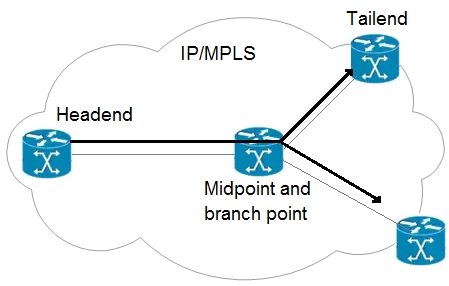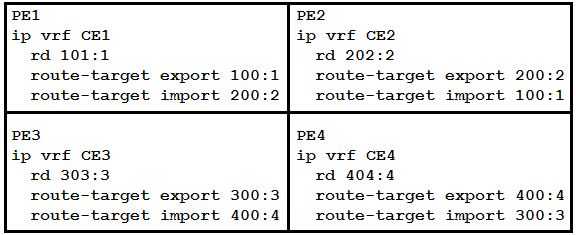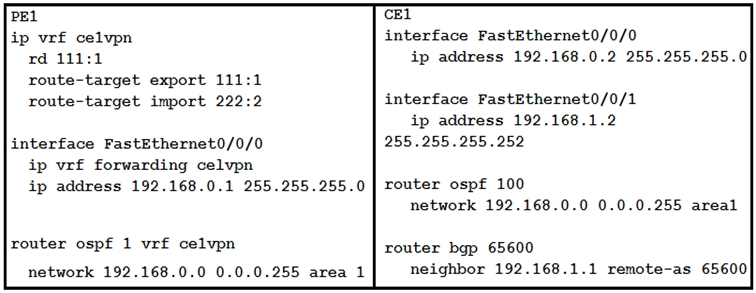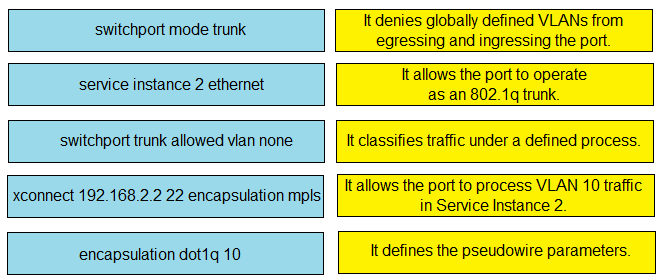Cisco 300-515 - Implementing Cisco Service Provider VPN Services (300-515 SPVI)
Refer to the exhibit.

An engineer is implementing an MPLS P2MP TE solution. Which type of router can serve as the midpoint router and the tailend router in this P2MP TE network implementation?
Refer to the exhibit.

A network engineer has been called to configure the four PE devices in order to enable full communication among the four CE devices connected to them. While starting to configure, he experienced a connectivity issue. Which two tasks should the engineer perform in order to begin the process correctly? (Choose two.)
An engineer is troubleshooting an ongoing network outage. Which command should he use that can display the live log files for a process or service running on a network device?
Refer to the exhibit.

If the two devices are operating normally, which two conclusions can you draw from this configuration? (Choose two.)
Which tool identifies the point of failure in a P2MP LSP from the ingress LSR?
In a typical service provider environment, which two tools are used to help scale PE router connectivity requirements? (Choose two.)
Refer to the exhibit.

Drag and drop the EVC configuration items from the left onto the correct descriptions on the right.

An engineer is troubleshooting an EoMPLS circuit on a Cisco IOS XR router interface that removes a VLAN
What do EVPN single-active and all-active have in common?
What must match in the EVPN and L2VPN configuration mode when configuring EVPN native in a router?




